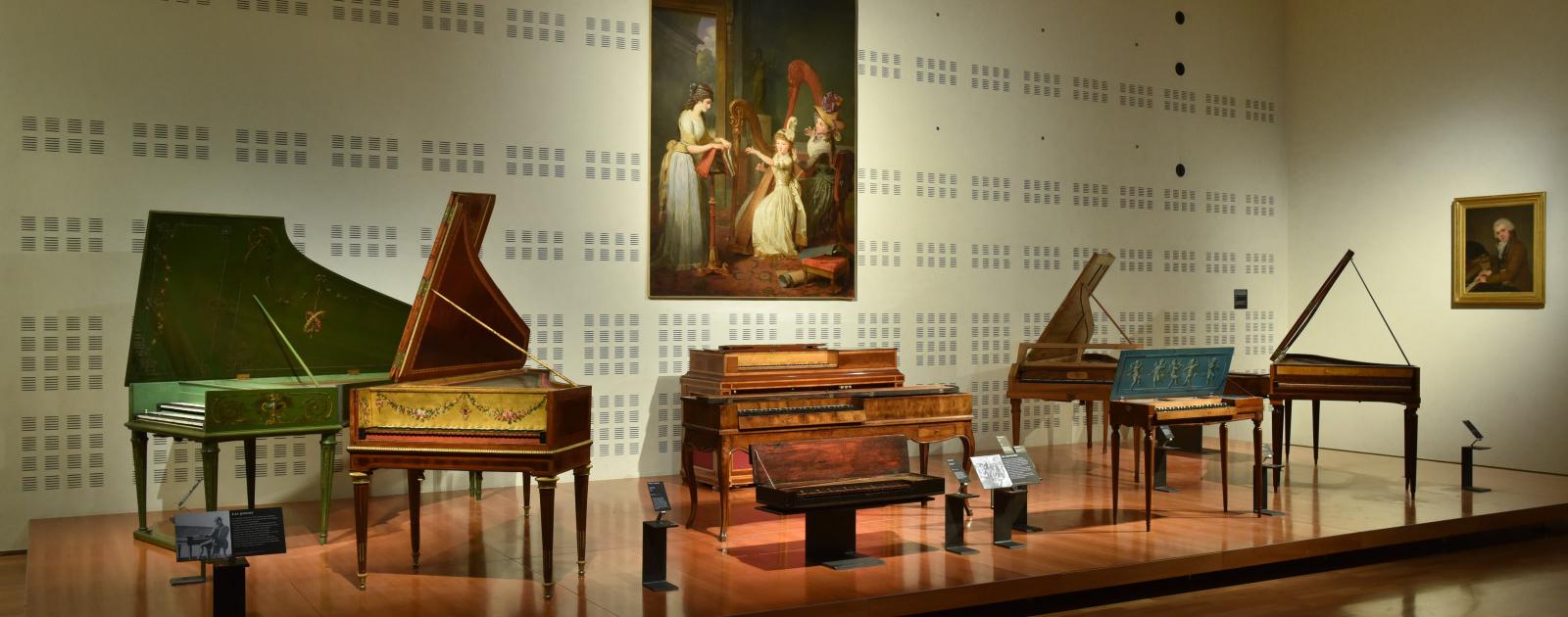Created on November 8, 1793, the Conservatory of Music includes an "instrument cabinet", presenting pieces from the confiscations from the people who had to flee the Country during the French Revolution.
In 1861, the State decided to buy the collection of instruments of Louis Clapisson, composer and member of the Institute, for the benefit of the Conservatory. Among its first curators, we can name : Louis Clapisson, Hector Berlioz and Gustave Chouquet.
In 1961, the Countess Geneviève de Chambure was appointed curator of the Instrumental Museum, which was then attached to the National Conservatory of Music in Paris. She held this position until 1973.
In 1978, the collections were transfered from the National Conservatory to the State. A new museographic project was set up, carried out by François Lesure and Henri Loyrette. The opening of the Cité de la musique in 1995 was the starting point of a new adventure for the collections of the Instrumental Museum of the Paris Conservatory of Music. Entirely thought out and designed by Franck Hammoutène, the scenography and architecture form a unique setting for this new Museum which opened its doors in early 1997.
In 2015, the integration of the Music Museum into the new Philharmonie de Paris opened a new page in its history. Benefiting from the influence of the institution, the Museum pursues several goals : accessibility to all types of audiences, digital transition, dialogue with the contemporary artistic creation, and the continued integration of music into a global history of the arts. Optimally showcasing the permanent collection is also a priority, with the introduction of the Pierre Henry Studio (2019), the creation of new thematic exhibitions related to current cultural issues, an updated acquisition policy including contemporary and non-Western music, and regular live performance within the Museum. The Museum’s cultural and scientific project helps strengthening its standing in the international art world and among the museums of France.
